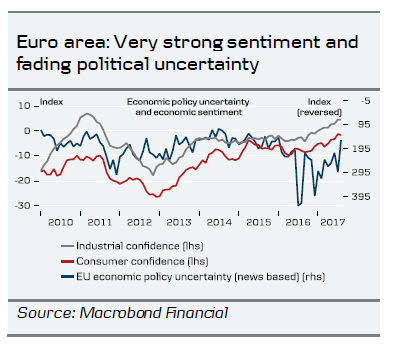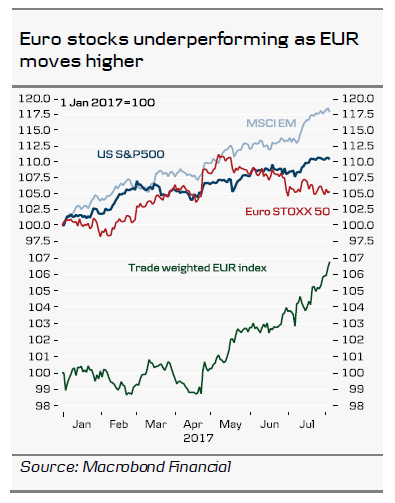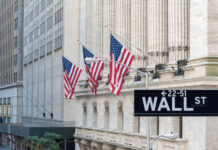Key points
- The outlook for global investments is becoming more positive
- A self-reinforcing capex recovery could strengthen global growth and leaves upside risk to our global growth forecasts
- We look for equities and bond yields to range trade before moving higher next year
- EUR/USD to continue higher
Investment growth has been the weak link in the global economy over the past three years. While private consumption was underpinned by robust real income growth – partly due to very low inflation – investments have been depressed. Political uncertainty, frequent shocks to the economy and depressed energy investments following the oil price collapse in 2014 kept corporate spending in check.
However, the scope for strengthening capital expenditure (capex) has increasingly been raised as a force that could make the global recovery more robust and resilient. Central banks such as the ECB and the Bank of England have also highlighted that stronger investment growth could increase the neutral rate for monetary policy and warrant higher rates in the future just to keep the policy stance unchanged.
In his speech in Sintra in June, ECB president Mario Draghi said: ‘There is newfound confidence in the reform process, and newfound support for European cohesion, which could help unleash pent-up demand and investment… As the economy continues to recover, a constant policy stance will become more accommodative, and the central bank can accompany the recovery by adjusting the parameters of its policy instruments – not in order to tighten the policy stance, but to keep it broadly unchanged.’ The Bank of England governor Mark Carney similarly said that ‘If these [investment] intentions are realised, the global equilibrium interest rate could rise somewhat, making a given policy setting more accommodative.’
Below we look at the scope for capex growth to enter a self-reinforcing cycle that strengthens the global recovery. Recent developments do indeed give rise for cautious optimism when it comes to investments. Some of the important drivers for investment growth have proven to be business sentiment, profit growth, financing costs and potential pent-up demand for investments following a period of depressed investments. Some of these factors are clearly correlated as stronger profit growth tends to lift business optimism. But low financing costs for example may become more stimulative if optimism is high and may not be enough to trigger investments if the outlook is uncertain and demand is weak. Hence, it could very well be that the positive effect of low yields and rates strengthens as the recovery takes hold.
Going through the above factors does indeed point to a more positive picture for investments:
First, business confidence in the OECD area is now the highest since 2011. As the global economy has gained steam companies have grown more optimistic. Reduced political uncertainty has probably added to the more upbeat expectations among companies in continental Europe. While Donald Trump has disappointed when it comes to the outlook for tax cuts and reduced regulation, corporate optimism is still quite high. In the Philadelphia Fed survey the index for capex expectations is now the highest in close to 30 years.
Second, profit growth picked up in late 2016 and early 2017 as the global economy gained steam and rising producer prices benefited the bottom line in many companies. When companies make money they are naturally more inclined to invest than when profits are falling.
Third, financing costs are historically low. In the euro area five-year corporate real yields are around zero (using core inflation as deflator) and in the US it is just around 1%. The average prior to the financial crisis was around 3½%. Fourth, there may very well be pent-up demand on the investment side. Investments as a share of GDP are still below the average prior to the financial crisis. This is most pronounced in the euro area. As the outlook improves and uncertainty declines some of this pent-up demand may come through.
The rising potential for a self-reinforcing cycle in investments poses some upside risks to our growth outlook for the coming years. And if it materialises it will put upward pressure on bond yields as demand for capital increases and central bank policy normalisation may happen faster.
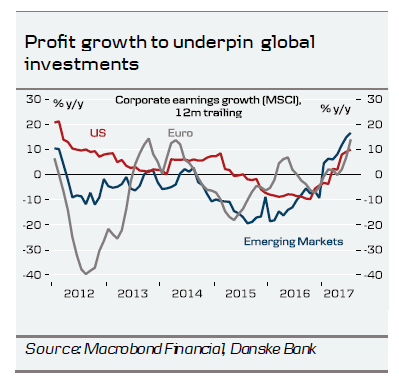
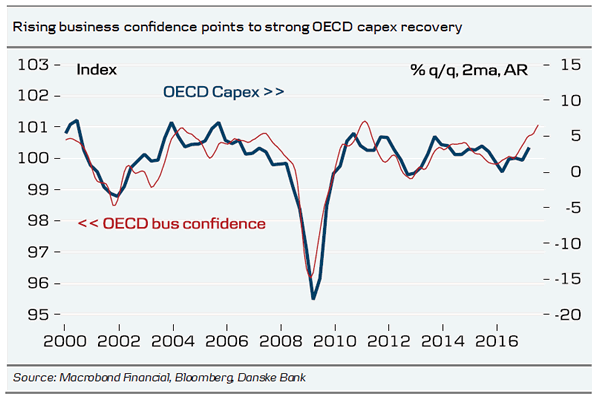
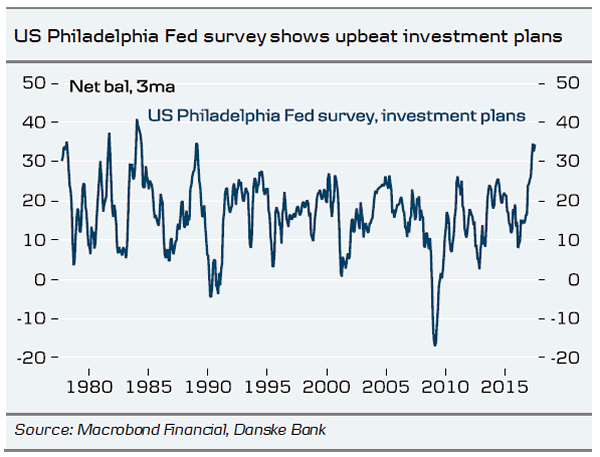
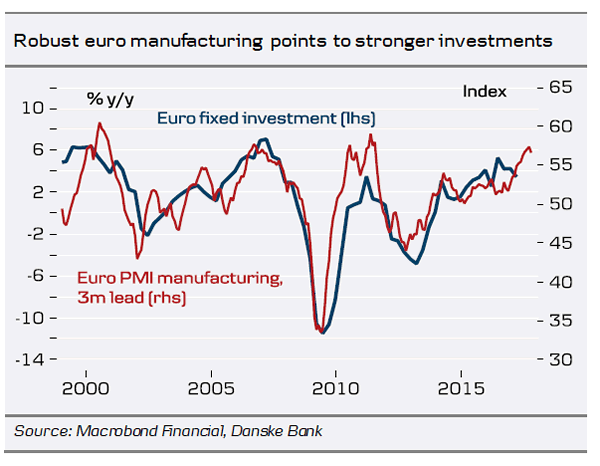

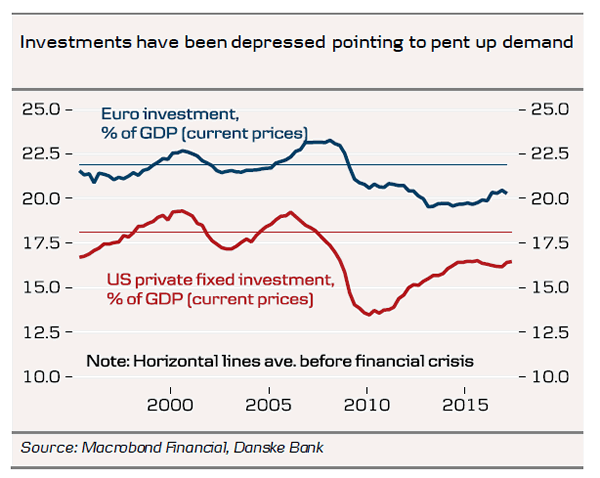
Euro area growth revised higher
In Euro Area Research: Tail winds to growth dominate EUR headwind near-term published today, we have upgraded our euro area GDP forecast for 2017 to 2.0% from 1.7%. GDP for Q2 released this week increased by 0.6% q/q – the highest since 2011 – and we see several tailwinds lending support to the euro recovery: pent-up demand for investments (as mentioned above), fading political uncertainty, very strong sentiment and ongoing job creation. Despite a decline in real wage growth, consumer confidence has stayed very high and retail sales growth continued at a robust pace. However, in 2018 we expect the stronger euro to start to feed through to exports and we have lowered our GDP forecast to 1.5% from 1.6%.
What could rock the boat? North Korea and trade
While the outlook has improved, what could rock the boat and change this more positive picture? The two main candidates for creating uncertainty are a trade war started by US protectionist measures and a further escalation of the North Korean crisis.
Recently tensions have increased between the US and China as Trump has become critical again of Chinese efforts to put pressure on North Korea to stop its nuclear ambitions. At the same time there have been many reports that Trump is preparing trade measures to protect the US from what he sees as unfair trade practices by the EU and China. Secretary of Commerce Wilbur Ross this week wrote an opinion column in the Wall Street Journal called “Free trade is a two-way street” in which he argued that the US was the most free trading country in the world and countries/blocs that preached free trade (China and the EU) were much more protectionist than the US. Ross said this would change under Trump. The timing of any measures is highly uncertain. It may still take some time given all the other issues that are keeping Trump busy. But it seems likely that some protectionist measures will eventually come. Whether it triggers a trade war or not is hard to say. The risk is definitely there. But it is too early to say if it is serious enough to derail the global recovery.
When it comes to North Korea, the regime in Pyongyang is clearly advancing much faster than expected on the technological front. The second missile test in July of an intercontinental ballistic missile was even more advanced than the first and according to experts if it had been fired at a lower angle it would have been able to reach big cities on the US east coast. The problem is significant as any military strike on North Korea could cause significant loss of life in South Korea and possibly Japan. On the other hand, Trump has been clear he will not allow North Korea to reach its goal of being able to hit the US with a nuclear warhead – a technological position that North Korea is fast approaching.
Market volatility low – yields to range trade still
With a positive global macro picture and subdued inflation risk assets have continued to perform and volatility has become very low. Euro area stocks have been the exception lately with equity prices having moved lower – partly due to the significant strengthening of the euro. We are neutral on equities versus cash in the medium term (3-6M) as we believe that we are in the interim period between two reflation waves in which the market will be range trading. Longer term, though, equities are expected to outperform as the global recovery is set to continue, barring any major shocks.
Core government bond yields are expected to range trade for the remainder of 2017 as inflation pressures are very subdued still and central banks likely to move slowly. The ECB has been challenged by the strengthening of the euro lately, and in the US lower core inflation and wage growth are putting the Fed on hold on rates until the end of the year and keeping the hiking path next year very moderate.
We look for EUR/USD to continue on an upward trend over the next year and have a target of 1.22 in 12M. Gravity is pulling the USD lower still as it has been overvalued for some time on our MEVA models and current account flows work in favour of the euro area. Stronger growth performance in the euro area is also supportive of the EUR
